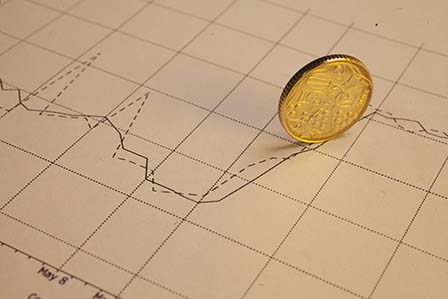Добро пожаловать на официальный сайт Национального банка Молдовы!
×
У вас хорошее зрение, и вы хотите отключить этот инструмент?
У вас хорошее зрение, и вы хотите отключить этот инструмент?
Программа приема граждан руководством Национального банка Молдовы.
Регистрация на аудиенцию осуществляется на основании письменного обращения по рассматриваемой теме.
Анка Драгу, президент
Владимир Мунтяну, первый вице-президент
Татьяна Иваничкина, вице-президент
Константин Шкендра, вице-президент
Добро пожаловать на официальный сайт Национального банка Молдовы!
Если вы хотите отправить сообщение (вопрос или предложение) в режиме "on-line", перейдите в раздел "Обратная связь" в главном меню в верхней части сайта.
Вы можете выбрать один из наиболее востребованных отчетов из списка:

Национальный банк и члены его руководящих органов независимы в осуществлении своих функций, установленных настоящим законом, и не могут обращаться за указаниями и получать таковые от органов публичной власти или какого-либо иного органа.

Стратегия денежной политики НБМ на среднесрочный период предусматривает поддержание количественного объектива инфляции на уровне 5.0% с возможным отклонением ± 1.5 процентных пункта – оптимальный уровень для устойчивого экономического роста и развития Республики Молдова на среднесрочный период.

Национальный банк обладает исключительным правом эмиссии на территории Республики Молдова банкнот и монет в качестве платежного средства.

Национальный банк обладает исключительным правом лицензирования, осуществления надзора и регулирования деятельности финансовых учреждений.

Национальный банк имеет право покупать, продавать и негоциировать иностранную валюту, используя активы, покупать и продавать казначейские обязательства и другие ценные бумаги, выпущенные или гарантированные правительствами иностранных государств и международными финансовыми публичными организациями.

Национальный банк осуществляет надзор за системой платежей в республике и способствует стабильному и эффективному функционированию автоматизированной системы межбанковских платежей.

Национальный банк является самостоятельным публичным юридическим лицом и несет ответственность перед Парламентом.

Национальный банк информирует общественность о динамике годовой инфляции, о стратегии денежной политике, результаты макроэкономического анализа, анализа развития финансового рынка и статистическую информацию, в том числе относительно денежной массы, предоставления кредитов, платежного баланса и положения на валютном рынке.

Национальный банк проводит экономический и денежный анализ, составляет платежный баланс, международную инвестиционную позицию и разрабатывает статистику внешнего долга Республики Молдова.
Веб-сайт www.bnm.md приоритизирует безопасность данных и использует файлы cookie для улучшения опыта просмотра и комфорта пользователя. Принятие использования файлов cookie повышает скорость работы страницы и обеспечивает нормальное функционирование модулей представления информации. Отказ от использования файлов cookie может замедлить загрузку сайта и затруднить плавную навигацию между страницами. Подробнее в Политике использования файлов cookie.
Inflation Report no.2, May 2014
If the main monetary policy instrument is the interest rate, then monetary policy can conceived in terms proposed by the well-known American economist John B. Taylor. John B. Taylor, a professor at Stanford, issued in the 90s the theory that the central bank should take into account two elements in determining the interest rate: the rate of inflation and the gap between achieved GDP and potential GDP (output gap). The original version proposed by Taylor may be represented as follows:
it - base rate; πt - inflation rate;  πt*- targeted rate of inflation;
πt*- targeted rate of inflation;  rt* - equilibrium real base rate;
rt* - equilibrium real base rate;
yt - natural logarithm of real GDP; y̅t - natural logarithm of potential GDP.
In this equation, parameters aπ and ay must be positive. However, Taylor in the work published in 1993 proposed to set these parameters at the level of 0.5 each (aπ = ay = 0.5). Operating principle of Taylor’s rule is very simple, but also very effective and suggestive. Thus, the central bank can quantify and promote a coherent monetary policy. Therefore, in case of inflationary pressures, the central bank tightens the monetary policy (by increasing the base rate), or loosens it (by reducing the base rate). It should be mentioned that monetary policy instruments have long and variable lags, which requires a decision taken now to have a future effect. In general, these lags can range from three quarters to six quarters. Therefore, monetary policy taken now will be based mainly on future signals and on the forecasts carried out. Thus, the main difficulties faced by central banks around the world are the accurate quantification of the interest rate channel and the development of certain consistent forecasts of the main macroeconomic indicators.
The following are some scenarios created based on artificial data, but which would explain simplistically with concrete data the way the Taylor’s rule works.
Table no. 1
|
Scenario |
aπ |
ay |
rt* |
πt |
πt* |
yt |
y̅t |
it |
|
1 |
0.5 |
0.5 |
2 % |
1 % |
2 % |
1 % |
2 % |
2.0 % |
|
2 |
0.5 |
0.5 |
2 % |
2 % |
2 % |
2 % |
2 % |
4.0 % |
|
3 |
0.5 |
0.5 |
2 % |
3 % |
2 % |
3 % |
2 % |
6.0 % |
|
4 |
0.5 |
0.5 |
2 % |
3 % |
2 % |
2 % |
2 % |
5.5 % |
Table no.1 shows that if the inflation rate is equal to the targeted inflation (πt = πt*) and GDP growth is equal to potential GDP (yt = y̅t), the base rate will be equal to 4.0 percent (scenario 2). In these conditions, the economy is in equilibrium and the situation can be considered ideal or basic. According to the scenario 1, if inflation falls below the targeted rate and GDP growth falls below the potential GDP, the central bank should loosen monetary policy to stimulate the economy and to orient the inflation towards its target (it=2.0 l percent < 4.0 percent) respectively. From scenarios 3 and 4 may be inferred the decision of the central bank in case of inflationary pressures. Thus, with the emergence of inflationary pressures, the central bank increases the base rate to stabilize the macroeconomic environment.
Республика Молдова, MD-2005, Кишинэу,
бульвар Григоре Виеру 1
© Национальный банк Молдовы
Условия использования


